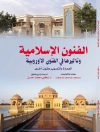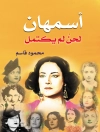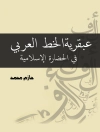This book analyzes the iconographic traditions of Jeremiah and of melancholy to show how Donne, Herbert, and Milton each fashions himself after the icons presented in Rembrandt’s Jeremiah Lamenting the Destruction of Jerusalem , Sluter’s sculpture of Jeremiah in the Well of Moses, and Michelangelo’s fresco of Jeremiah in the Sistine Chapel.
Table of Content
1. ‘The Sad Prophet Jeremiah’ as an Image of Renaissance Melancholy PART I: REMBRANDT’S JEREMIAH: DONNE AND LEARNING HOW TO BE A PREACHER 2. ‘I turn my back to thee, but to receive corrections’: Donne and the Art of Convetere in The Lamentations of Jeremy, for the most part according to Tremelius , and ‘Good Friday, 1613 Riding Westward’ 3. ‘First the Burden , and then the Ease ‘: Donne and the Art of Convetere in the Sermon on Lamentations 3:1 and in the Letter to His Mother PART II: SLUTER’S JEREMIAH: HERBERT AND LEARNING HOW TO VISUALIZE THE HEART 4. ‘My heart hath store, write there’: Writing on the Heart in Herbert’s The Temple 5. ‘Then was my heart broken, as was my verse’: Visualizing the Heart in The Temple PART III: MICHELANGELO’S JEREMIAH: MILTON AND LEARNING HOW TO BE A PROPHET 6. ‘With new acquist / Of true experience’: The Failed Revolutionary in the Letter to Heimbach and Samson Agonistes 7. ‘And had none to cry to, but with the Prophet, O earth, earth, earth! ‘: Style, Witnessing, and Mythmaking in The Readie and Easie Way 8. ‘As a burning fire shut up in my bones’: From Polemic to Prophecy in The Reason of Church Government and The Readie and Easie Way 9. ‘Unapocryphall vision’: Jeremiah as Exemplary Model for Donne, Herbert, and Milton Appendix A: Renaissance Angels and Other Melancholy Figures Appendix B: Renaissance Images of Jeremiah Appendix C: Renaissance Melancholy and Modern Theory
About the author
Reuben Sánchez is Lecturer at Sam Houston State University, USA.












